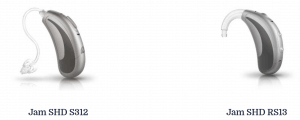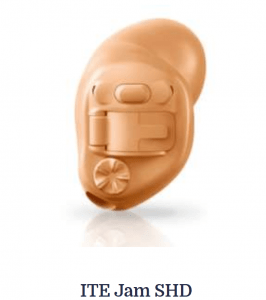Which Type of Hearing Aid is Best for You
Hearing aids are a safe and convenient solution to hearing loss. Two common types are behind-the-ear hearing aids and in-the-ear hearing aids.
Why Choose BTE Hearing Aids
Behind-the-ear hearing aids are discreet and, of course, fit nearly behind the ear. These days, behind-the-ear hearing aids are more comfortable to wear. They are sleeker and slimmer versions of their predecessors. Usually, the microphone of BTE hearing aids is located behind the ear, and the sounds around the person wearing the hearing aids are routed through a thin, clear tube which is located inside the ear.

BTE hearing aids with a slim tube are recommended for people with high frequency hearing loss or those with small ear canals. There are different styles available for hearing aids, and each style provides different performance features. The latest BTE hearing aids can have volume and settings that adjust automatically to suit the wearer’s surroundings. If you prefer BTE hearing aids, you can seek help from an audiologist to know which type of BTE hearing aids best suit your needs.
Cons of BTE Hearing Aids
There are disadvantages to choosing BTE hearing aids, including:
- More visible than other hearing aids
- Prone to pick up wind noise
Why Choose ITE Hearing Aids
In-the-ear (ITE) hearing aids are different from behind-the-ear hearing aids in that ITE hearing aids utilize the natural acoustics of the user’s ears. Also, ITE hearing aids use the capability of the user’s ears to amplify sound naturally. ITE hearing aids usually fit entirely within the outer ear, but they reach into the ear canal.

Compared to BTE hearing aids, ITE hearing aids are more discreet. There are ITE hearing aids on the market that are completely invisible. In addition, wearing glasses while wearing ITE hearing aids won’t cause problems, because unlike BTE hearing aids, ITE hearing aids do not occupy any space behind the ears. The hearing aids are usually recommended for people with mild to severe hearing loss, but it is always best to consult an audiologist before making a decision.
Cons of ITE Hearing Aids
There are also disadvantages to choosing LTE hearing aids, including:
- Because ITE hearing aids are small, they may not have features that other hearing aids have
- Its size also requires good finger dexterity and eyesight
BTE and ITE Hearing Aids Comparison Chart
| Hearing Aid | Microphone | Size | Other Features | Recommendation |
| BTE Hearing Aid |
|
|
|
|
| ITE Hearing Aid |
|
|
|
|
Other Hearing Aid Options
In The Canal – ITC
In-The-Canal (ITC) hearing aids are slightly larger than ITE hearing aids, so they are more visible when worn. But, the hearing aids can fit comfortably in the ears. ITC hearing aids may come with controls for convenience.

(Half Shell) ITE Hearing Aids
Custom hearing aids can have a half-shell shape, such as the variant of the ITE hearing aids. The hearing aids are created to fit into the lower half of the ear bowl. Because the hearing aids are relatively larger, directional microphones can still be added.
Full Shell ITE Hearing Aids
The outer ears are covered when the hearing aids are worn. The hearing aids are visible and have additional features, including volume controls, switchable programs and often a telephone control.
Completely-In-The-Canal (CITC) Hearing Aids
Completely in-the-canal hearing aids are designed to lodge deeply in the ear, so that people can’t notice them when being worn by the user. The hearing aids are recommended for people with mild to moderate hearing loss, as well as those who don’t have dexterity issues.
Going Through Consultations
It is important to reiterate the necessity for a consultation by an audiologist from a major hospital if you are looking for hearing aids. An assessment may be obtained free of charge from an audiology department, or from a private practice practitioner. If found out that you need a hearing aid, it may be necessary to get a second consultation.
When going through consultations, you need to get an audiogram. Your hearing services provider should explain the results. The benefits and limitations of different hearing aid types should be explained to you as well, when a consultation results in a recommendation of a hearing aid. Also, information such as a detailed quote, as well as an availability of a trial period for a hearing aid, if there’s one, should be provided to you. The hearing services provider should also discuss a plan for getting the best out of your new hearing aid, as well as an arrangement for a follow-up appointment.
Cost Differences Between BTE and ITE
If you prefer to buy a hearing aid by yourself, there is a dizzying array of hearing aid options. If price is not a concern, you can buy a top-of-the-range hearing aid, which can include fitting and service. The price of a hearing aid can vary from one clinic to another, as well as from one country to another. When shopping around and getting quotes for hearing aids, you should have a copy of your audiogram and a practitioner’s recommendations to be able to get quotes. A hearing test can sometimes be included in a hearing aid package, which can also include fitting, adjustments and ongoing service. You should also know what features of a hearing aid you want to have .


1 Comment
This is a very informative post. Thank you. I am trying to decide between the ear and behind the ear.
Comments are closed.